Introduction
Similar to the previous two articles on Home Automation and Security Systems, part of my move was to plan all the audio-video, especially the cable drops, networking, and a central distribution location. As with home automation, this was planned in advance and had to be done prior to the wall finishes as some of the locations required cutting drywall and drilling trough beams.
Wiring (Video and Networking)
Very shortly after taking possession of the house, one of the first things I did right after getting the contractor started was to find someone that could run Cat 6 and Coax throughout the house and home run them to a central location. I wanted this to be in place early in the process due to the house design. Without getting into the idiosyncrasies of the house construction, many of the areas required significant cutting of walls and ceilings, so it was important this be done before all the finish work started. Below is summary of the simple requirements I defined that I wanted to achieve as I called each cabling contractor.
- Single plate in each location that had a Cat 6 and Coax output plug on the same plate
- All video cables had to be RG-6U Quad Shield to provide the best signal shielding
- All Ethernet cables had to be Cat 6 and tested
- No daisy chaining of any type and each had to be properly labeled on each end
- Each wire had to have service loop especially on the home run side to compensate for any mounting adjustments as I had not finalized where I was mounting everything yet.
- Wire runs to each room as well as a new feed from the street (I much preferred that be done by an expert and not the installers from Time Warner)
- And most importantly, all runs had to be replaceable so that new wires could easily be pulled if the need arose. Due to some inaccessible locations, this required some flex to be run
- I also wanted some sort a distribution box to house so that all the audio-video cables would come to a central location so that if any amplifiers were needed it would be far easier to do
As we all do, I did some calling around and talked to various companies and as you might expect, many had no idea what I was talking about or were only accustomed to very simple jobs. When I asked about Cat 6 vs Cat 5e, most had done very little of it and were not familiar with Cat 6. I was surprised that these companies were touting themselves as networking companies and did not know much about Cat 6. The exception to the rule was a company called Sterling Data Systems. I ended up speaking to Jesse (the owner), and right away I knew that he knew his stuff. Not only was he knowledgeable but he was also very flexible in working with my crazy schedule. He made last minute appointment changes on several occasions due to escrow delays, contractor delays, and worked around delays caused by ducting work. His pricing was completive and he was able to meet all the requirements. I chose to do the network performance check myself so I could use the same hardware and be able to compare apples and apples to see if the result I was getting was the same as my prior network which was amongst the fastest I had seen. His team was very professional and despite many disruptions along the way (not caused by them), they finished the job in less than three days with absolutely no issues. Everything tested perfectly and was professionally done. In addition to the Cat 6 they also ran the video cables and performed all the terminations for both ends. Needless to say, I was very pleased and all the work was done beyond my expectations.
Central Distribution of Video
When you want to run multiple rooms and some with multiple drops, signal strength becomes a real concern. Given a fixed signal coming in from the street, simply splitting it may or may not work. In my case, I had 7 TV drops I needed to feed, and the gain coming from the cable was not sufficient. As it was, the signal coming in from the street was split so that it would feed the cable modem and the other to a distribution box that feed the 7 TV drops. When all was said and done, amplification was used on the video signals only and so far the results have been awesome. I will leave out all the details of how the installer from Time Warner installed the amp incorrectly and amplified both the video and cable modem effectively saturating and over driving the cable modem to the point of having intermittent service. Fortunately, I was able to spot it and do a quick fix to get things working perfectly.
Wireless
Though I dislike wireless networking, now a days you cannot complete your home audio, video, or computer needs without a good Wi-Fi setup and good coverage. I will cover more detail on my update to my home networking but in short, I installed 3 separate Wi-Fi networks to cover my needs. The main is an Ubiquiti Unify hot spot which handles my Chromecast, Air Play devices, IP cameras, and my main mobile control devices. The second is dedicated to the kids as well as guests in the house and is routed to a separate physical network to avoid security concerns with peer to peer gaming (more on this in the network update), and the third is used for some specific IP cameras and special devices.
Media Playback
My philosophy on media playback had not changed much even though the hardware has. The main ingredient for me is movies and for that I use Windows Media Center on the two main TV’s (Living Room and Family Room) and for the others I use a dynamite combo of Roku/Plex. This is of course for movies and for the little TV I watch I use Samsung DVR supplied by TW as well as their cable boxes (boring I know). To supplement other activities, I use air play and a couple of Apple TV’s.
Big Screen
Of course what puts it all together is TV/Monitor that you select. When I planned the move, the one thing that was on the agenda was to get a new big screen for the living room as that is the main watching area. I did allot of research before making my final decision and my criteria was pretty basic. I wanted at least a 70 inch screen but no larger than eighty based on budget and available room. I won’t go through all my selection criteria but suffice it to say that for the most part I only like a few brands. My first choice is Samsung followed by Sharp and Sony. Unfortunately there is still a premium price to pay for screens over 65 inches so my selection boiled down to Sharp as my best choice. The main reason is Samsung makes only a 65 and 75 inch. The 65 I felt was too small for the room and the price difference for the 75 was close to $900 (late 2014). When all was said and done, I was able to get the Aquos 70 inch for close to $800 less than a comparable (but larger) Samsung. I figured since this stuff obsoletes so fast, I would save the money now and upgrade in a few years when the UHD/4K stuff gets straightened out and more content is available. In case you have not come to the conclusion yet, I opted for a 1080P screen rather than spend double on something I can’t yet use.
For the rest of the house, I used a 52 inch Sharp in the family room, and the bedrooms all have 46 inch screens from Samsung, LG, and Sharp.
Surround Sound
I kept almost all of the equipment I had at the old place with one addition. I added a second Velodyne subwoofer to the opposite side of the room based on recommendations from other podcasts, and wow, want a difference. I now understand the basis for the recommendation and have become a believer. I still have to install two more speakers once I figure out exactly were to place them.
So What’s Next?
My short term goals are pretty clear and obviously I will write an update that shows what I ended up with. Here is a short list of what I plan to do in the next 6 months (with the exception of the last item).
- Whole home audio. I want to build out my Sonos to cover the rest of the house. Presently I am only covering two rooms. I would like to add the family room, patio, garage, and kitchen.
- Outdoor entertainment. I will be running conduit to support three Cat 6 drops, and a RG-6U to handle an outdoor TV in the patio along with Roku. I will be exploring wireless speaker options to enhance the patio viewing. In addition, I will use one of the remaining Cat 6 drops for an IP camera to supplement my home security.
- Wi-Fi expansion. Since I am using The Ubiquiti Unify hot spots, I will be adding two more. I will add one in the outdoor patio to provide better coverage when people are outside, and one in the garage to improve streaming performance of the Wireless IP cameras I have outside and in the garage.
- Upgraded Media Center PC’s and upgraded servers. I will be upgrading my Media Center PC’s with stronger CPU’s to better handle the blue ray decoding. Though it works well now, I want to take advantage of the faster GPU’s in faster chips for the best performance. Servers will get additional storage to provide more breathing room.
- Receiver/Speaker Upgrade. I want to explore upgrading my existing receiver as well as adding some positional speakers. Not sure when I will do this a I want to make sure it supports the latest format such as Dolby Atmos and want to wait for pricing/selection to improve.
Summary
I am very happy with the overall project especially with the infrastructure (wiring and networking). I am also very pleased with the upgrades of the big screen and the additional sub-woofer which added a whole new experience to movie watching. I now look forward to new movies coming out so I can get the enjoyment and experience from watching it. As these things go, they are never complete so things will always continue to evolve but for now, I am really enjoying it.


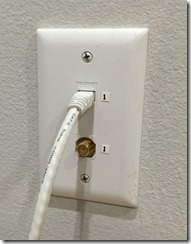
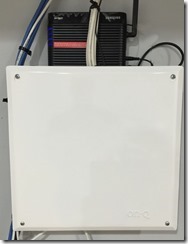
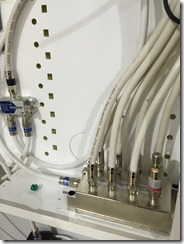
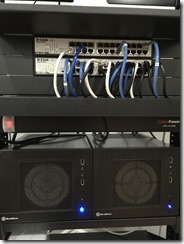
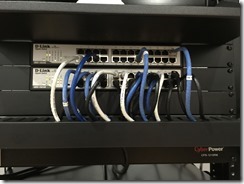
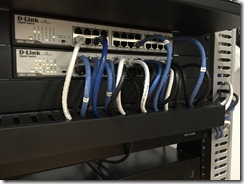
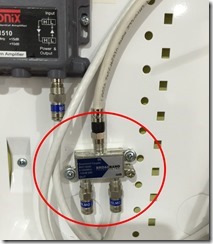
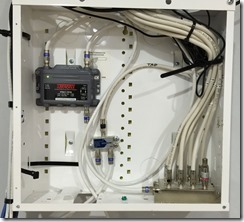
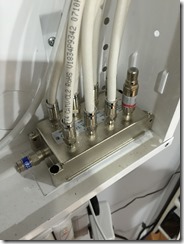
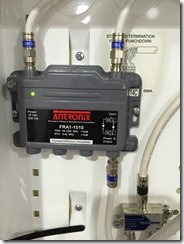
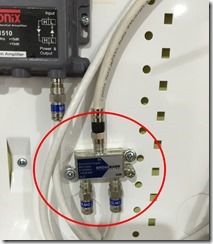
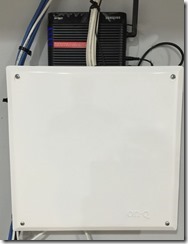
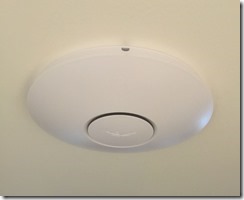
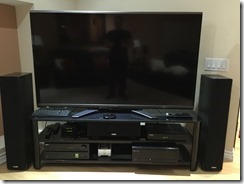
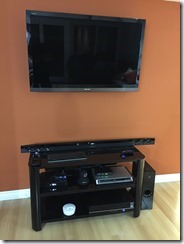
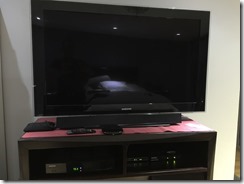
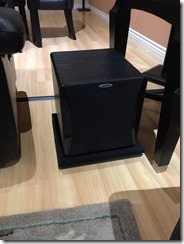
[…] particular use case that is unique to me however it gives you an idea of what can be accomplished (see my other post for more information) when setup correctly. I have spent some time tweaking and adjusting the channels to give me solid […]